Employee Feedback Survey: How to Create + 40 Questions
June 27, 2025An employee feedback survey is a set of questions designed to learn how your team feels about their work (employee experience). These surveys help you understand what’s going well and where things could be better.
Employee feedback surveys are key to a healthy organization. But many companies still struggle with poor response rates, confusing questions, and survey fatigue. That’s why I’m sharing what I’ve learned about building surveys that actually work (and lead to real improvements).
If you’re in HR or a leader trying to better connect with your team, this guide will help. You’ll learn how to create surveys employees want to take and how to turn responses into useful insights.
What is an Employee Feedback Survey
An employee feedback survey is a set of questions designed to learn how your team feels about their work (employee experience). These surveys help you understand what’s going well and where things could be better.
The best surveys go beyond simple ratings. They dig deeper into what drives engagement, performance, and retention. When done right, they build trust between employees and leadership. They also give you the data you need to make smart decisions.
The biggest difference between good and bad survey programs? Mindset. Companies that treat surveys as one-way tools often see low engagement. But organizations that see them as part of a two-way conversation get better results and stronger teams.
Listen to Your People
Track engagement and wellbeing continuously and ensure leaders take action on all levels of the organization – effortlessly in Slack or MS Teams.
40 Questions to Include in Employee Feedback Surveys
Here are 40 tried-and-true questions I’ve used across many companies and industries. They cover six key areas of the employee experience. From my experience, it’s best to keep employee feedback surveys short and sweet, never going over the 40-question threshold.
The question design is a core part of our product, and we rely on the latest research to design the questions that both make it easy for employee to respond and provide enough leaders with enough cumulative data.
Employee Pulse Survey Questions
Pulse surveys are short check-ins to track how people feel right now. Here are 15 quick questions:
- How satisfied are you with your current role?
- How is your workload?
- Is it clear what you should focus on and prioritize?
- Are you getting the support you need from your manager?
- Do you have the tools you need to do your job well?
- How is your work-life balance this week?
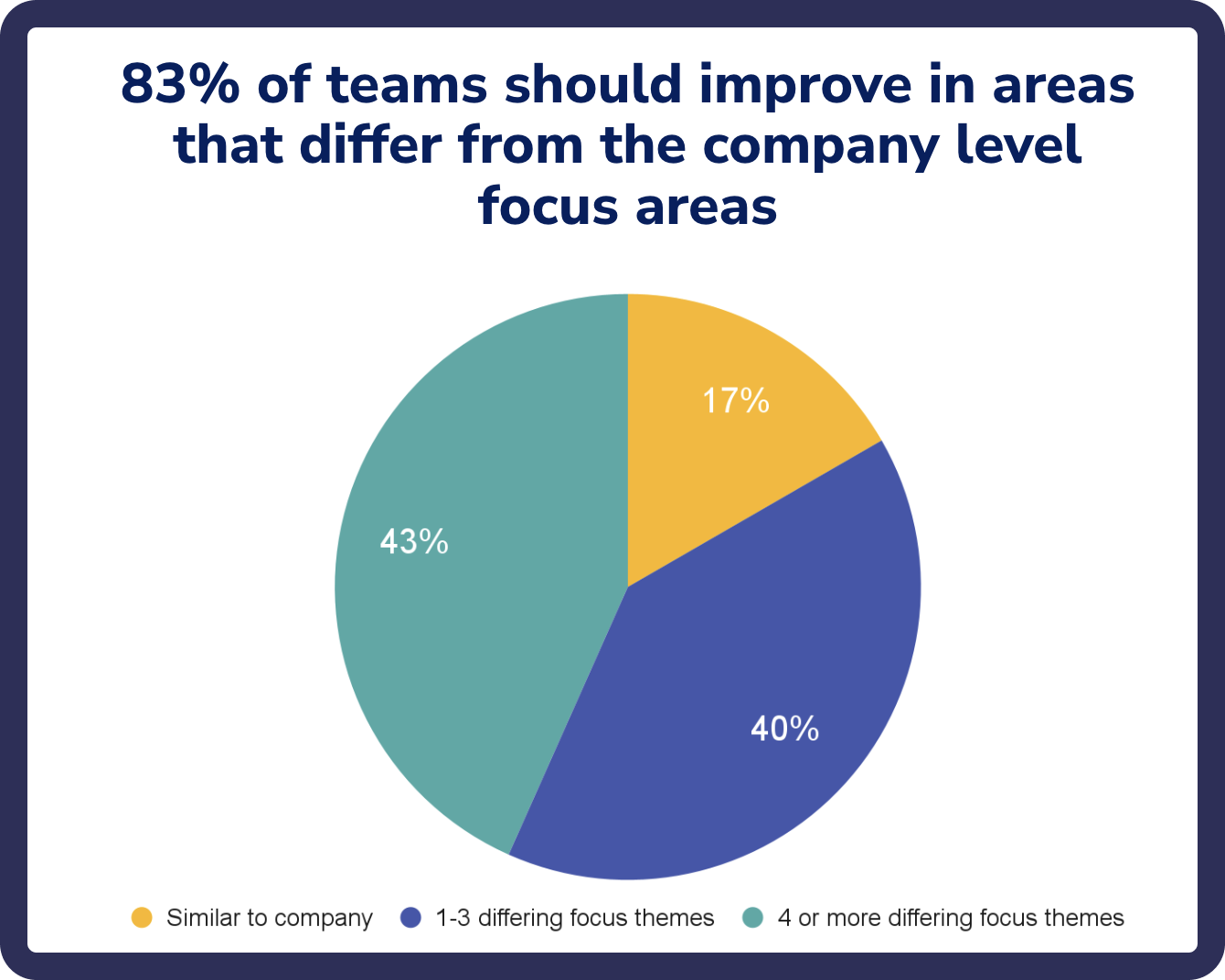
Employee Engagement Survey Questions
These questions explore long-term engagement:
- I enjoy the work I do
- I can grow and learn in my role
- I’m recognized for doing good work
- I have confidence in our management’s ability to identify, prioritize, and solve problems
- I’d recommend this company to a friend
- My opinions matter at work
- I have a close friend at work
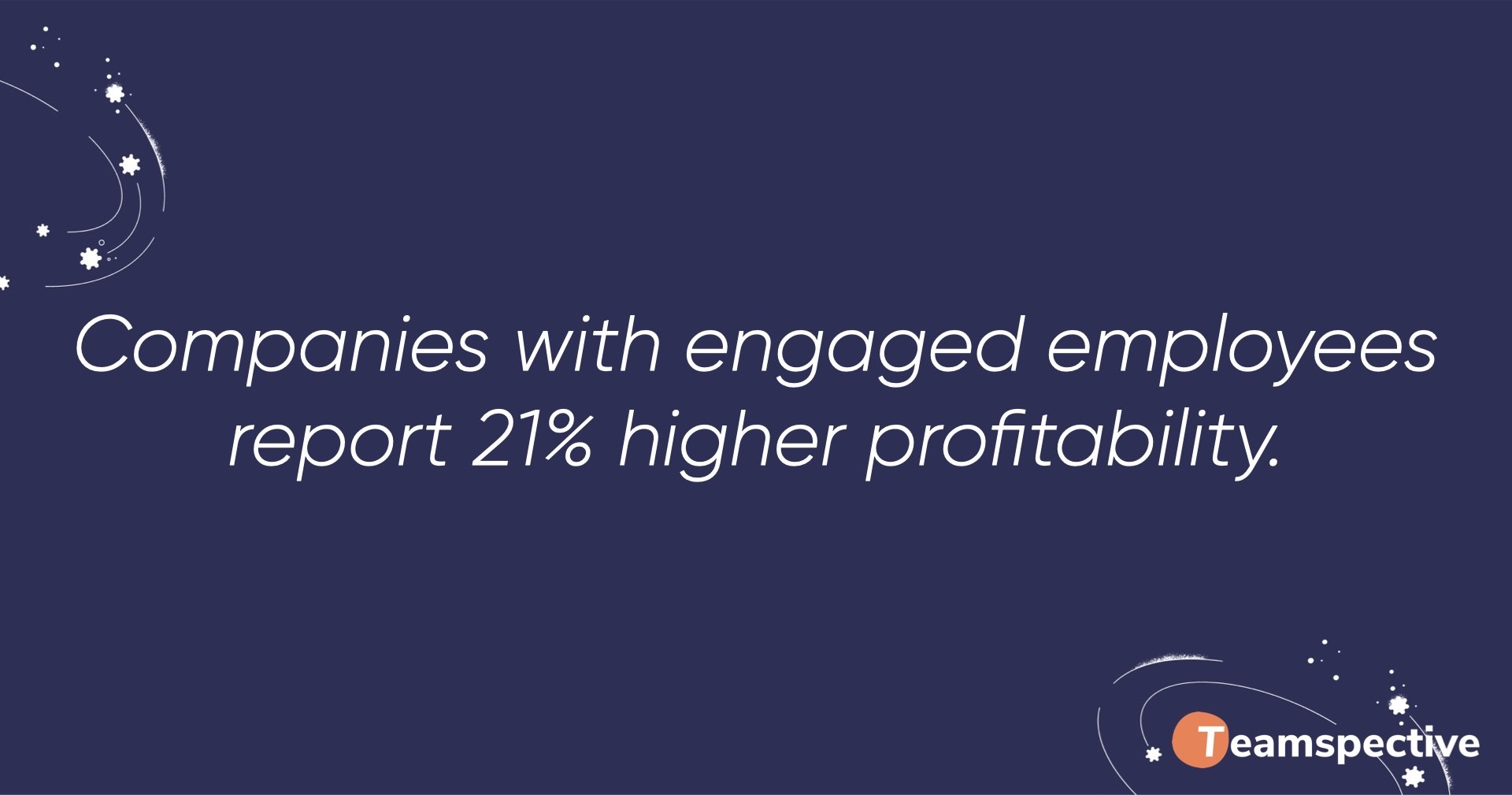
Employee Satisfaction Survey Questions
These questions check how happy employees are with key parts of their job:
- Are you satisfied with the career opportunities in your job?
- Are you satisfied with the quality and amount of feedback you get at work?
- How satisfied are you with the tools and tech provided?
- How satisfied are you with work schedule flexibility?
- How satisfied are you with leadership communication?
- How satisfied are you with decision-making in your team?
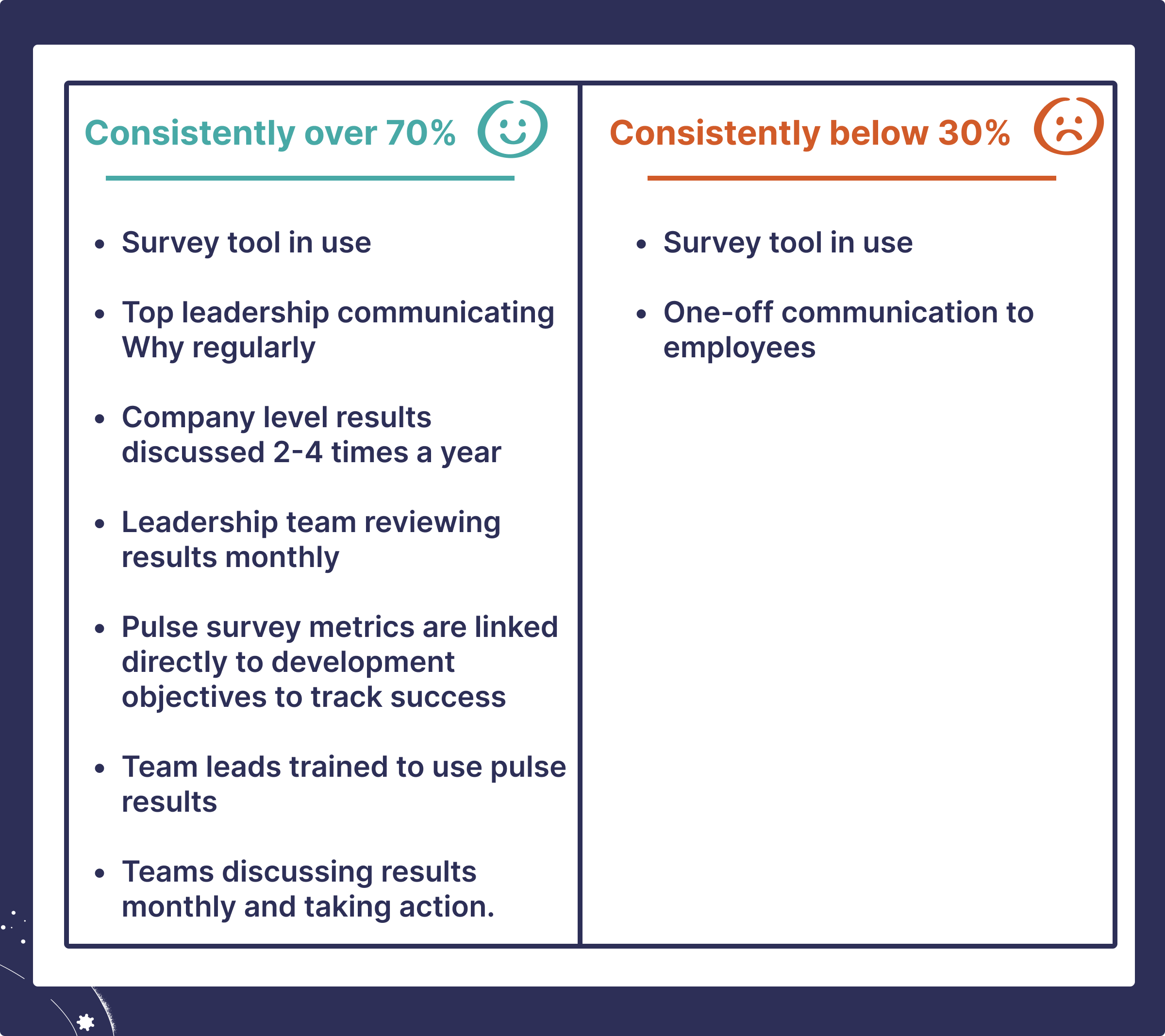
Company Culture Survey Questions
These questions help you learn about your company’s culture:
- Our values are clear and well-communicated
- Leaders show our values in their actions
- I can speak up without fear
- Mistakes are seen as learning opportunities
- There’s a strong sense of community
- The company handles change well
- Our culture supports work-life balance
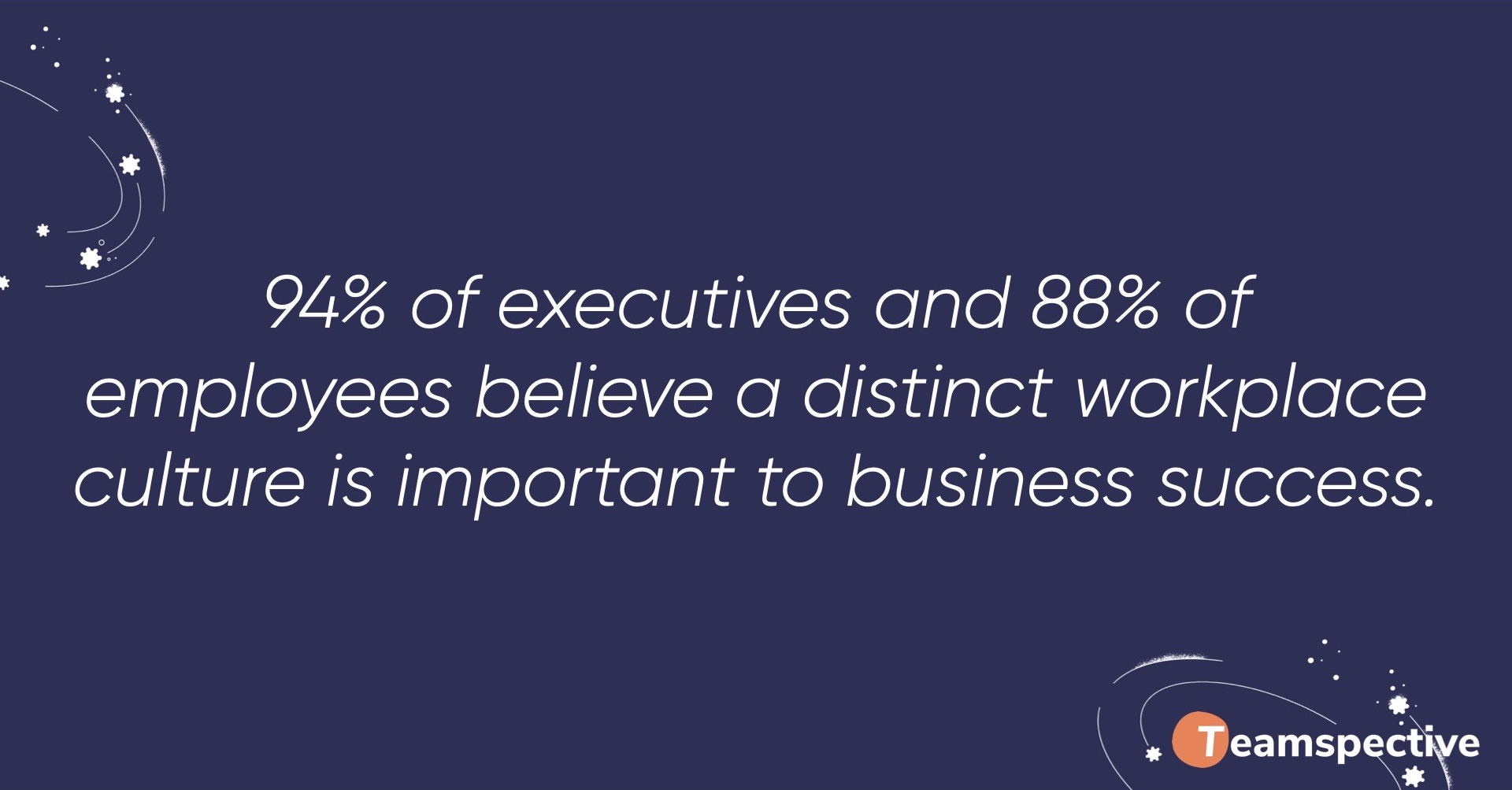
Diversity, Inclusion, Equity, and Belonging Survey Questions
These questions explore how inclusive and fair your company is:
- In our company, people are given equal opportunities to succeed and advance in their career
- People are being treated fairly and equally at work
- I can share ideas or concerns with my manager
- I see diverse leaders here
- The company supports diversity and inclusion
- My team values my perspective
- Discrimination is taken seriously
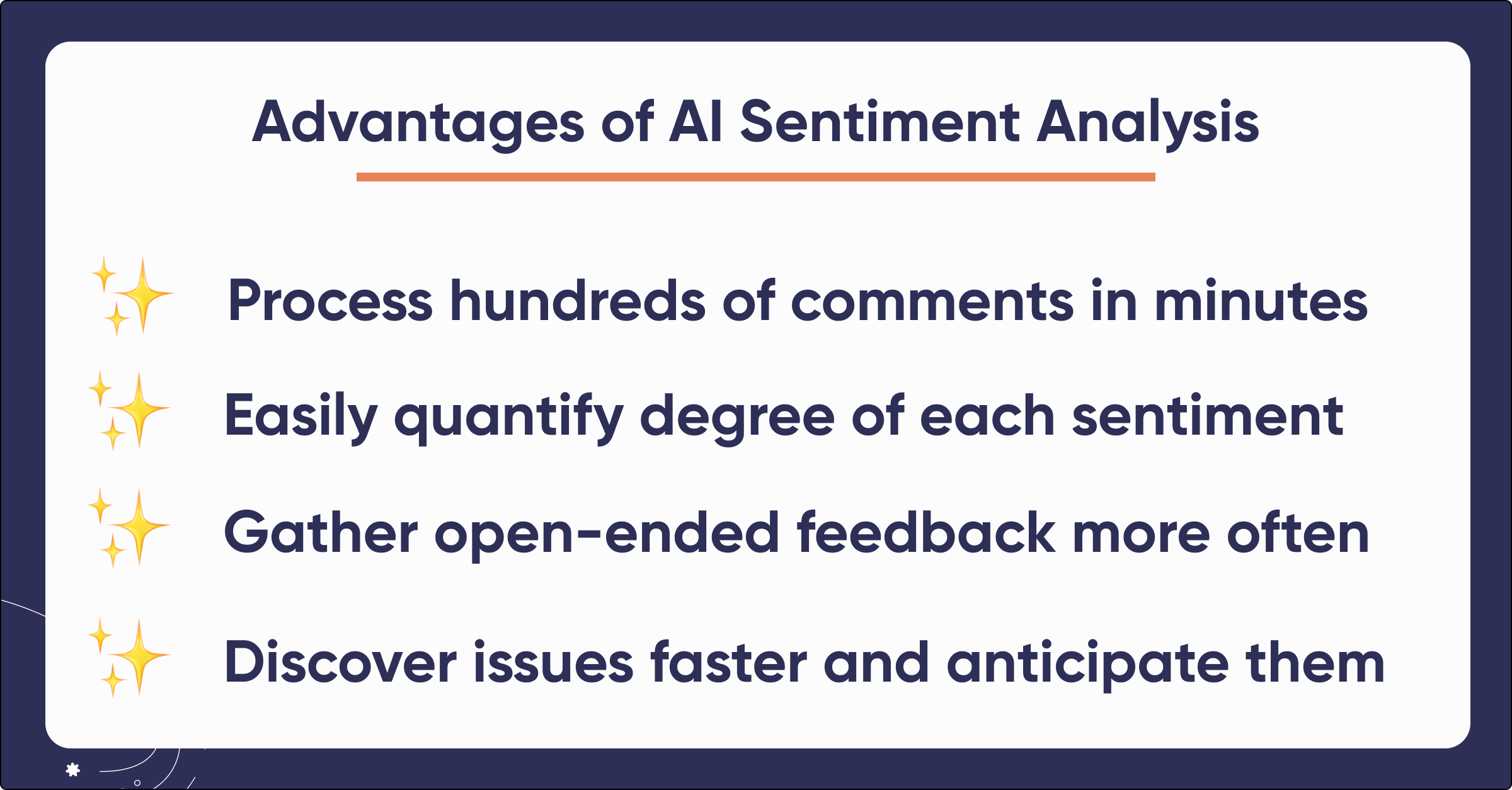
Leadership Enablement Survey Questions
These questions measure how well leaders are supporting their teams:
- My manager gives clear direction
- My work gets enough attention from my direct manager
- I trust my manager’s decisions
- My manager handles conflict well
- Leadership is open about decisions
- I believe in the company’s direction
- Leadership invests in employee growth
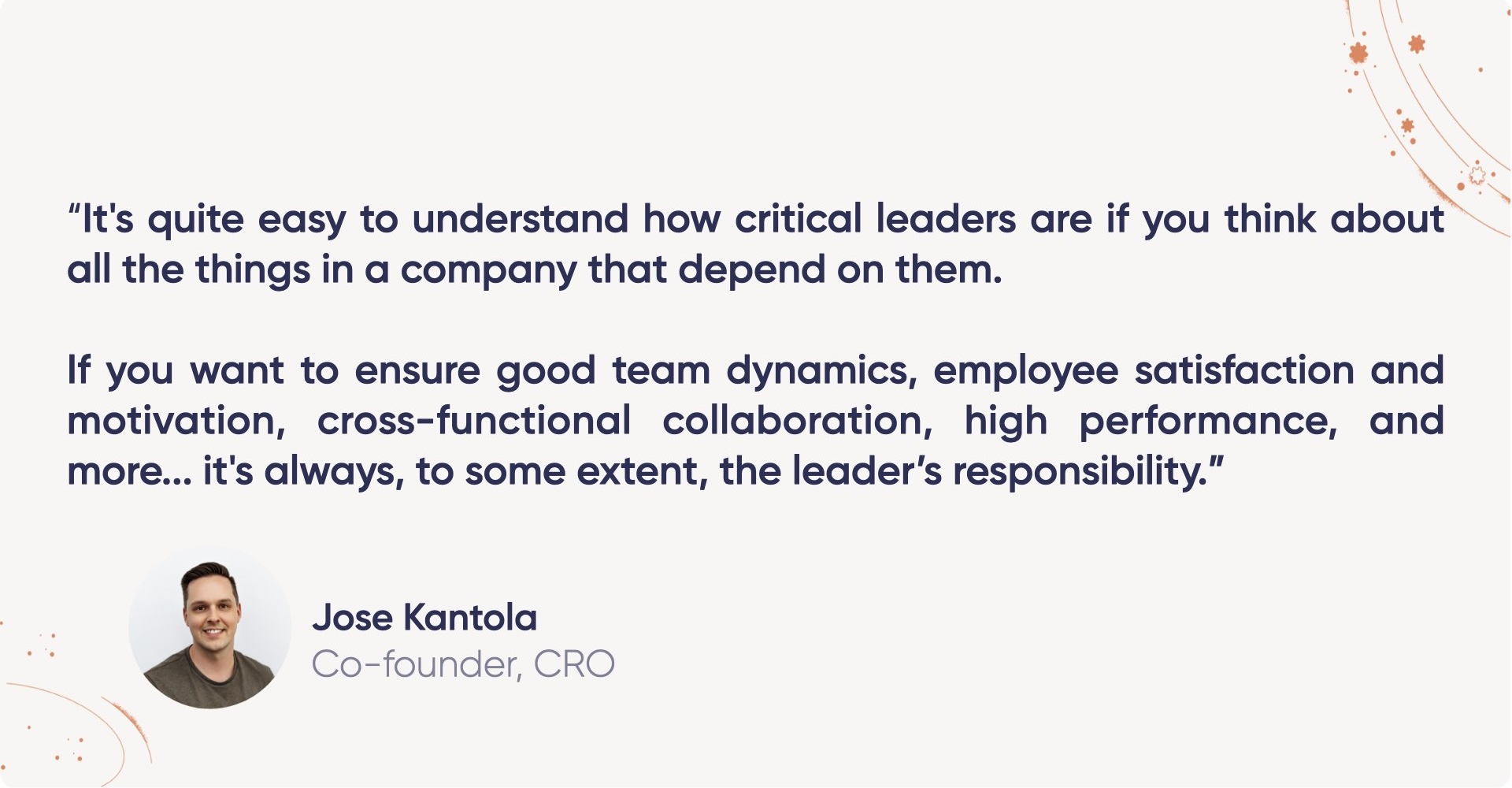
Best Practices on How to Create an Employee Feedback Survey
To create great surveys, you need a plan. Here’s what works:
Start with Clear Goals
Know what you want to learn and why. Ask yourself: “What will we do with these answers?” If you can’t answer that, wait before launching a survey.
Keep It Short and Focused
Too many questions = survey fatigue. Keep pulse surveys to 5–10 questions. Annual ones shouldn’t go over 50.
Mix Question Types
Use both ratings and open-ended questions. Numbers show patterns. Comments show the why behind them.
Protect Privacy
People need to trust that their answers are anonymous. Use a third-party tool and explain how you’ll protect their info.
Test First
Try your survey with a small group. This helps catch unclear questions or tech issues before launch.
Explain the Why
Tell your team why you’re asking for feedback, what you’ll do with it, and when they’ll hear back. This builds trust.
Take Action
Most survey efforts fail here. Always share results, and tell people what’s changing based on what they said. Share results within 30 days, and action plans within 60.
Create a Survey Calendar
Plan out your survey schedule. I suggest quarterly pulse surveys and one big annual survey. Not too many. Not too few.
Benefits of Using Employee Feedback Surveys
From my experience, the rewards go far beyond getting data.
Higher Engagement
When people see you asking for feedback regularly, they feel heard. That alone can boost engagement.
Better Retention
Surveys can show who might be thinking about leaving before it’s too late.
Smarter Decisions
Survey results back up HR and business decisions with real data. I’ve seen companies use this to shape policies and invest in leadership development.
Stronger Trust
When people see real changes from their feedback, trust in leadership grows.
Solve Problems Early
Surveys help you spot issues before they grow into big problems.
Track Progress Over Time
Surveys let you measure improvement. You can track how things are changing month by month or year by year.
Some platforms make this even easier. Tools like Teamspective combine survey data with performance and collaboration insights. This gives leaders a full picture and helps them take smart, focused action to improve team engagement and performance.
Conclusion
Employee feedback surveys can lead to major improvements, but only when done right. I’ve run hundreds of survey programs, and the best results come from treating surveys like conversations, not just checklists.
You don’t need perfect scores. You need open feedback, fast action, and ongoing trust. When that happens, the results follow.
Start small. Stay consistent. And always follow up. Your team will notice and your organization will be better for it.



